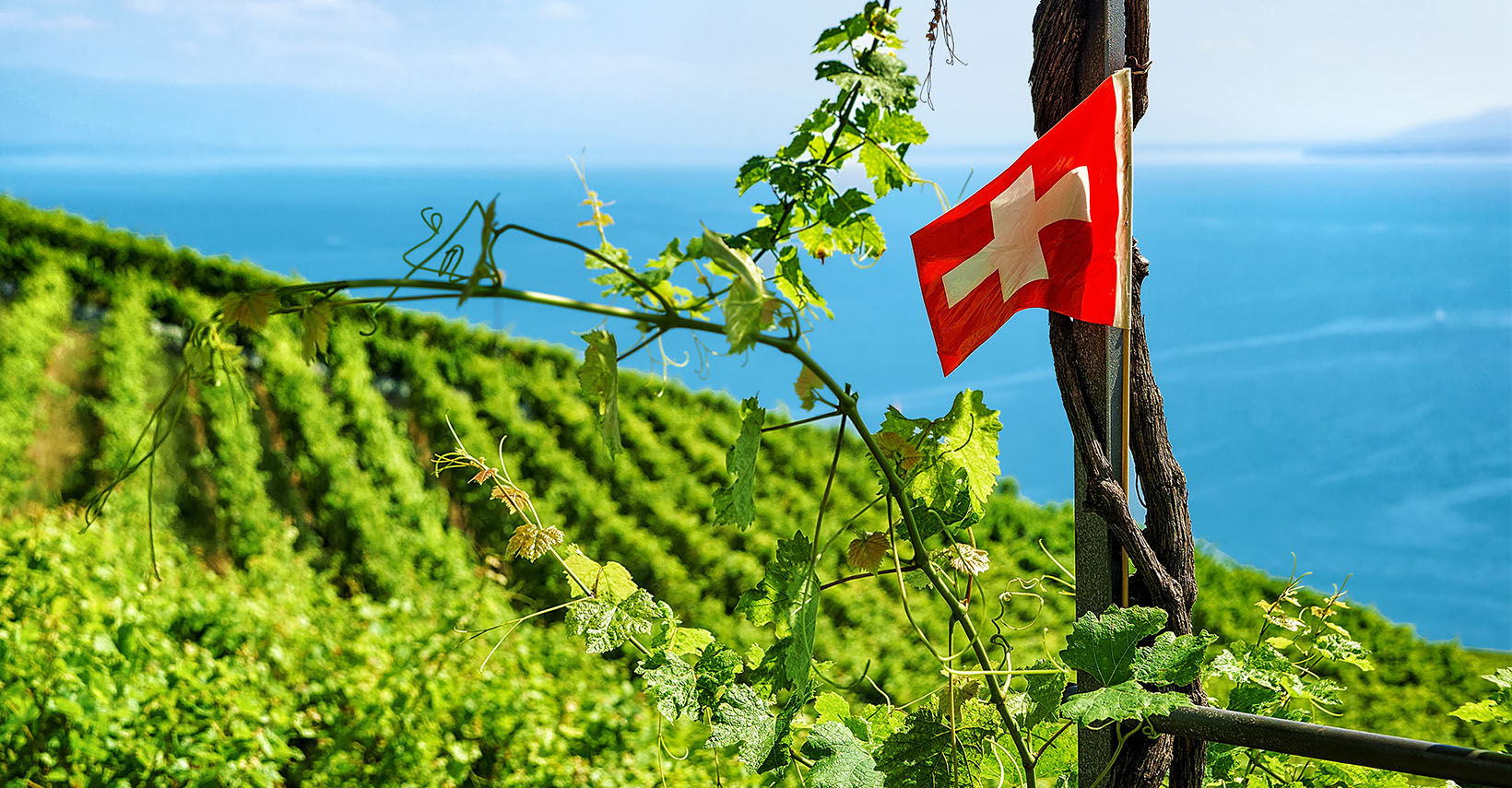In 2020, EHL and Changins wine school launched a study on Swiss wines and the impact of Covid-19. Since a semblance of returning to normal is taking shape, the time seems opportune to summarize this project, taking care to place the Covid-19 crisis in a more general context. The aim is, in particular, to tackle the fundamental problems that affect Swiss wines and to try to identify possible solutions. The following analysis is based on interviews conducted with wine producers and key market players during the second half of 2020.
Sales held up well in 2020
The results of a previous poll pointed to an increase in private consumption of wines, which particularly favored Swiss wines. A study by the Swiss Wine Market Observatory (OSMV) confirms this trend for wines sold in supermarkets. The feedback from the wine growers questioned is consistent with these observations, but only in part and above all, it needs to be qualified.
Private consumers have indeed consumed and bought more, but resellers, and especially the hospitality sector, have not. Some winegrowers are talking about a strong rebound and widespread solidarity during the summer of 2020, but overall restaurants and hoteliers have simply not been able to place sufficient orders to make up for the shortfall in spring. It should also be noted the complete collapse of the events sector which represents a significant part of the turnover for some producers.
Overall, the customer mix was therefore decisive. Those who do the best overall are those who have a large private clientele and have been able to reach it effectively. Several winegrowers stress the importance of a user-friendly website. Likewise, sending emails and being on social media seems to have helped maintain the connection with customers, and therefore, supported sales.
Important nuances
Next, it should be noted that there are strong nuances at two levels: market segment and geographic location. We can identify two distinctive dimensions that combine to create four main segments. The first dimension is the size of the farm. In Switzerland, we have "big houses", small to moderate-sized estates, and "micro-winegrowers". The latter are often very dependent on the former, to whom they sell most of their grapes. The second dimension refers to the quality reputation and the domain's hold on the production-sales cycle (these two elements generally go hand in hand). Thus, among the domains of moderate size, we can distinguish “independent winegrowers” who are strongly differentiated by their reputation and “intermediate winegrowers” who need sufficient notoriety and only market a limited part of their production directly.
The segment made up of independent winegrowers is generally the one that has withstood the crisis the best. In some cases, 2020 is even shaping up to be "the best year ever." The intermediate winegrowers segment experienced a complicated year, in particular due to a less accessible clientele (and sometimes even inaccessible in the case of events), a sluggish demand for grapes and must, and pressure on prices. The big houses exploited their size by launching communication/marketing actions and by reducing their margins. They seem to have been able to limit the damage in this way. Finally, the situation of micro-winegrowers, which was often already difficult before the crisis, has worsened further. The problems here are structural and are characterized in particular by a strong dependence on a small number of intermediaries and an inability to invest to develop the wine field.
Successful local initiatives
In order to counter the negative effects of confinement, the winegrowers acted mainly at two levels: careful management of financial flows (in particular by postponing investments) in order to maintain sufficient liquidity, and marketing/communication strategies (emailing, special offers, free shipping ). The second approach seems to have been well received by customers and has worked well.
Communities have also implemented measures such as reduced working hours (RHT), Covid loans and the possibility of downgrading parts of production. The wine makers interviewed consider that these measures have been rather weak overall. This is not necessarily surprising given the limited time available to develop and deploy these measures. This is also consistent with the fact that Covid-19 has only exacerbated the imbalances that were already present. Concretely, what is lacking is a real strategy to tackle structural problems.
Some local or regional actions have worked particularly well. For example, the good DireQt (French-speaking Switzerland), WelQome (Vaud), Kariyon (Friborg) and other local initiatives have been very effective. These offers have all offered a discount (subsidized by public authorities or businesses in the case of DireQt) to consumers to encourage them to consume locally. Some of these initiatives focused on the semi-containment period, but most have been active for a longer time. Besides being a commercial success, these offers were also an excellent opportunity to connect with consumers.
Five key issues that Swiss viticulture must face
The interviews made it possible to identify five issues that already existed before the Covid-19 crisis and which appear more significant than ever today:
- Complexity: In Switzerland, everything is fragmented and subject to regionalism. In addition, we have our own practices (such as the AOC system perceived as confusing: "people don't get it").
- Production costs: In particular, it is impossible to produce entry-level wines at prices comparable to those of neighboring countries: "we have the most expensive low-end wines in the world".
- No one-size-fits-all solution: Needs and opinions vary widely, depending on the segment, ranging from the establishment of mechanisms to protect indigenous production from foreign competition to the anticipated (and sometimes desired) disappearance of the “weakest”, notably via the uprooting of vines.
- Lack of leadership: Swiss wine production suffers from a lack of support and the absence of sufficiently strong governance at national level. The multiplicity of players representing the sector at the regional level makes everything opaque, complex and, ultimately, inefficient.
- Unsuitable organization of the sector: The sector operates in a tight flow, which makes it very dependent on economic and climatic hazards. In addition, the decline in the number of intermediaries combined with a frequent deferral of the role of carrying stocks from intermediaries to winegrowers places the latter in a complicated position, both financially and logistically.
A particularly important issue is the lack of support and the absence of sufficiently strong governance at national level. Several speakers mentioned the examples of the EU, which actively supports producers with a strategy, or of Austria, where a centralized policy has been put in place in order to modernize the sector and offer it some prospects. One winegrower mentioned “the EU subsidies [which] are a kind of unfair competition”. Stronger support in Switzerland could rebalance the situation. The following sentence sums up the general feeling well: "the Confederation must take a position on the question of the share of Swiss wines that we want in Switzerland". This share is currently 37.7% according to figures from the Federal Office for Agriculture (OFAG).
Questions for the future and possible solutions
There is no doubt that Swiss wines face significant challenges. But other Swiss industries have in the past skillfully turned difficulties into opportunities to reinvent themselves. This is consistent with our feelings in contact with respondents and this is reflected in the large number of thoughts and solutions they shared with us (see Table 1).
Table 1: Reflections and possible solutions
| Strengthen training and anticipate generational changes | We must strengthen the continuing education offer for winegrowers and focus on concrete and current issues (management, marketing/ communication, digital tools, generational transition) so that the return on investment is rapid. |
| What position to adopt in relation to foreign wines? |
Objectively, it seems complicated or even unrealistic to aim to protect the domestic market from foreign wines. On the other hand, one avenue that could act on several of the issues identified above would be export. However, this presupposes the establishment of a clear strategy with adequate funding and therefore strong leadership and support. |
| What offer of Swiss wines do we want? | To use the words of a winegrower, the best strategy in terms of supply is probably to "live the paradox" and set up a two-speed strategy with wines suitable for mass marketing and others resolutely focused on quality. |
| Organization and governance of the sector | Everything points to a lack of funding. It might be appropriate to invest and increase resources, by setting clear objectives, in order to reduce bureaucracy (which often results from a lack of resources and organization) and allow Swiss wine promotion to better place Swiss wines. |
| Original strategies | Innovative logistics and commercial solutions (e.g. “climate reserve”, centralized logistics, etc.) could meet the needs of the Swiss wine industry. It would be worth investigating their feasibility and the optimal way to implement them. |
Conclusion
This report shows a contrasting situation for wine producers in Switzerland. While some actors benefit from a favorable situation, others really suffer. Covid-19 has to some extent exacerbated these imbalances, but it would be wrong to use the term "cyclical crisis" to characterize this episode. Indeed, there are real winners and the measures put in place seem to have worked well overall. In reality, the crisis is structural in nature: Swiss viticulture is facing several issues that have grown in importance in recent years.
The interviews made it possible to identify some of the main problems facing the Swiss wine industry and also to develop possible solutions. Some of these avenues deserve to be analyzed in depth in order to be able to develop a real strategy for Swiss wines. The interviews are generally rather optimistic and above all, it is interesting to note that non-winegrowers are often those who have the most positive vision and the most firmly oriented towards the long term. One retailer notes that the quality of Swiss wines has increased enormously and that it is increasingly recognized, he judges Swiss wine's image positively and indicates that even outside the borders he observes a positive development. Finally, he underlines that, for his part, Swiss wine sales are following a “very positive dynamic”.
Swiss wines therefore certainly have a future. But we have to tackle the identified problems, solve them, and work on a long-term strategy. This requires strong leadership and greater government support.

Associate Professor at EHL Lausanne

Associate Professor of Economics and Management at University of Applied Sciences Western Switzerland (HES-SO)

Associate Professor of Finance at EHL





